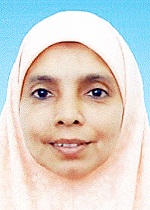High Risk Behavior and Knowledge among Female Adolescent: A Study on Rajshahi City of Bangladesh
Keywords:
Abstract
The purpose of this study was to realize the situation of adolescent girls’ health in Bangladesh. For this, I conducted a community-based cross-sectional study at 8 wards in Rajshahi City Corporation area, Bangladesh. I interviewed a total of 1084 adolescent girls aged 10-19 years through a structured questionnaire. I have also used univariate, bivariate, and logistic regression analyses for the investigation of various socio-economic, demographic, and health-connected female adolescents’ behavior and related knowledge variables. The study result shows that 37.6% of adolescent girl knows teenage health care. It is also shown that very few numbers of adolescents have an idea about abortion, reproductive health, acquaintance pregnancy avoiding, and family planning methods but a maximum number of respondents heard about the idea of sex, marriage, and HIV/AIDS. The study reveals that there is a significant association between knowledge about adolescent health care and the idea of abortion and HIV/AIDS. Sexual violence is directly related to the duration of the marriage. The age of respondents, Idea about pregnancy, Idea about abortion, Physical problem during menstruation, and knowledge about pregnancy method also has a significant effect on knowledge about adolescent health. We recommend improved accessibility to relevant information on reproductive health issues. The study also suggested making the existing health facilities more adolescent-friendly.
References
Alam M.R. (2012) Determinants of fertility behavior among adolescent’s reproductive women in Bangladesh. Middle East Journal of Nursing. Volume No.6, Issue-1.
Bangladesh Planning Commission (2013) Millennium Development Goals: Bangladesh Progress Report 2012. Dhaka.
Cockcroft A, Andersson N, Milne D, Hossain MZ, Karim E (2007) What did the public think of health services reform in Bangladesh? Three national community-based surveys 1999 – 2003. Health Res Policy Syst, 5: 1.
Gazi R, Khan SI, Haseen F, Sarma H, Islam MA, Wirtz AL, Rahman M (2009) Young Clients of Hotel-Based Sex Workers in Bangladesh: Vulnerability to HIV, Risk Perceptions, and Expressed Needs for Interventions. Int J Sex Health, 21(3):167– 182.
Kulkarni MV, Durge PM (2011) Reproductive health morbidities among adolescent girls: Breaking the silence. Ethno Med, 5 (3):165– 168.
Ministry of Health and Family Welfare (2009) National AIDs/STD Program in Bangladesh. Dhaka, Bangladesh.
Ministry of Health and Family Welfare (2011) Strategic Plan for Health, Population & Nutrition Sector Development Program 2012 –2016. Dhaka, Bangladesh.
Mishra SK, Mukhopadhyay S (2012) Socioeconomic Correlates of Reproductive Morbidity Among Adolescent Girls in Sikkim. India Asia Pac J Public Health, 24(1):136– 150.
Moore A, Haseen F, Aboud F, Khan MSH, Rahman APMS, Bhuiya I, Rob U, Larson CP (2006) Rapid assessment of young people's perspective on government, NGO, and Private health services. Dhaka: Icddrb.
National Institute of Population Research and Training: Bangladesh Demographic and Health Survey 2007. Dhaka: National Institute of Population Research and Training; 2009.
NIPRT (2013) Bangladesh Demographic & Health Survey 2011. Dhaka. National Institute of Population Research and Training.
Sarma H, Islam MA, Gazi R (2013) Impact of training of teachers on their ability, skills, and confidence to teach HIV/AIDS in classroom: a qualitative assessment. BMC Public Health, 13: 990.
UNPF (1998) Nations Population Fund: The State of the World Population 1998 Repor t. New York: United Nations Population Fund.
Downloads
Published
How to Cite
Issue
Section
License
Copyright (c) 2020 Asian Journal of Applied Science and Engineering

This work is licensed under a Creative Commons Attribution-NonCommercial 4.0 International License.








